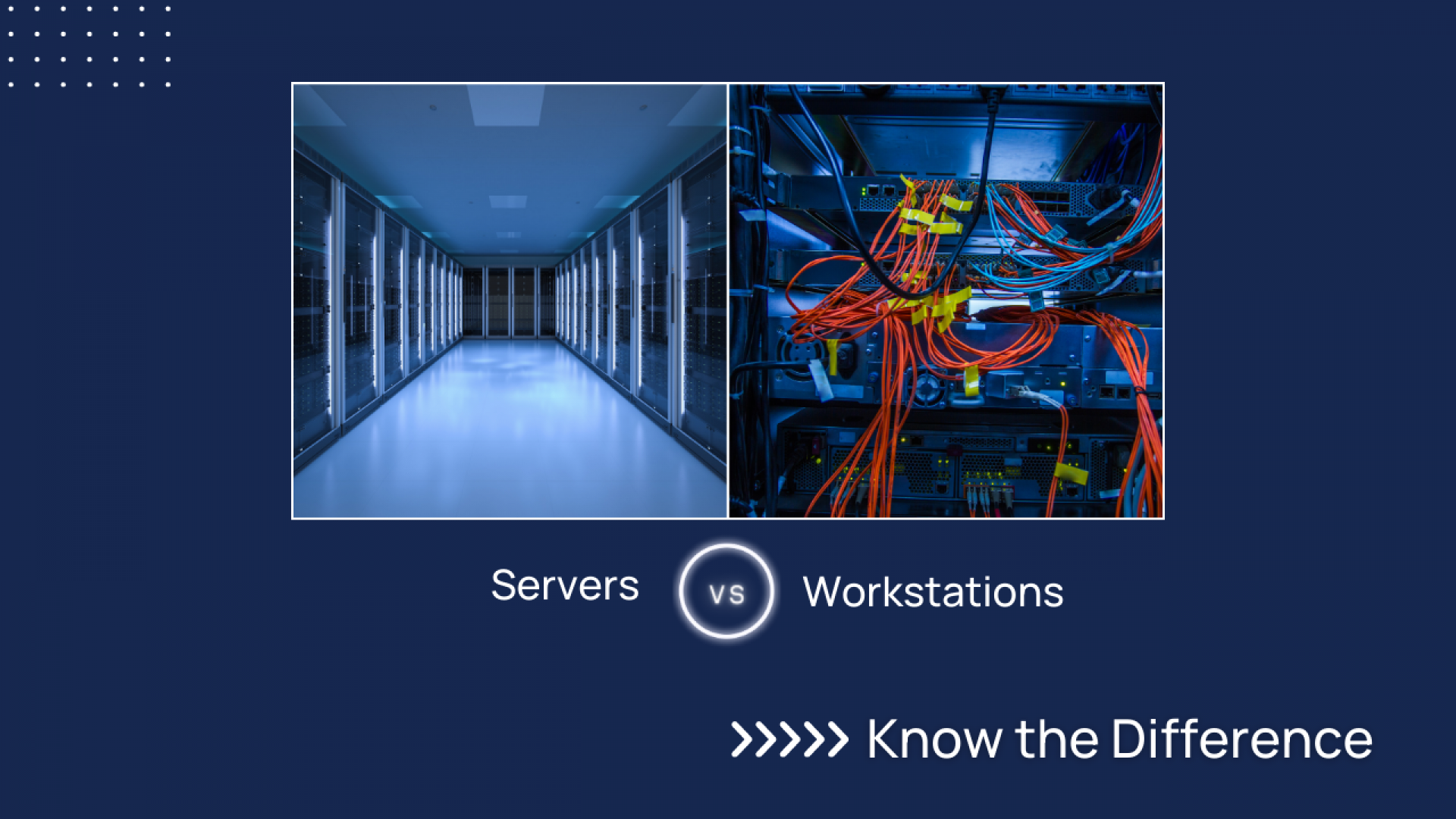
Introduction:
The world of computing is vast and diverse, with various types of hardware designed to perform specific tasks. Two key components of this landscape are servers and workstations. Though they may seem similar on the surface, their purposes and capabilities are fundamentally different. In this comprehensive guide, we will delve into the distinctions between servers and workstations, highlighting their unique use cases and helping you better understand which solution best suits your needs.
Defining Servers and Workstations
Servers
A server is a powerful computer designed to manage, store, and process data, as well as provide resources and services to other devices in a network. Servers often run specialized operating systems and software, enabling them to handle multiple tasks simultaneously, such as file storage, web hosting, and database management.
Workstations
Workstations are high-performance computers built for running resource-intensive applications, such as computer-aided design (CAD), video editing, or scientific simulations. While a workstation might resemble a typical desktop computer, it generally boasts a more powerful CPU, additional memory, and advanced graphics capabilities, allowing it to handle complex tasks with ease.
Key Differences Between Servers and Workstations
Hardware
Server hardware is designed for reliability and durability, as they often operate 24/7 and must be able to handle heavy workloads. Key components, such as processors, memory, and storage, are optimized for multitasking and high-performance tasks. Redundant power supplies, error-correcting memory, and hot-swappable components are common features in server systems.
Workstations, on the other hand, are built with a focus on raw computing power and graphical capabilities. They typically feature top-of-the-line processors, high-performance graphics cards, and ample memory. Workstations may also include specialized hardware, such as GPUs for accelerated computing or specific co-processors for demanding applications.
Operating System and Software
Servers often run server-specific operating systems, like Windows Server or Linux distributions, that are optimized for network management, security, and resource allocation. These systems may include management tools and specialized software for managing various server functions, such as email or database management.
Workstations generally use desktop operating systems, like Windows, macOS, or Linux, which are designed for ease of use, productivity, and compatibility with a wide range of applications. While the software used on workstations can be resource-intensive, it often doesn't require the same level of multitasking or network management as server software.
Scalability
Servers are designed with scalability in mind, allowing organizations to add more resources or capabilities as their needs grow. This may involve adding additional CPUs, memory, or storage, as well as upgrading or integrating new software and services.
Workstations, while still customizable and upgradeable, are generally not as scalable as servers. They are built for individual use and tailored to specific tasks, meaning that their hardware and software configurations may not be as flexible as those of servers.
Unique Use Cases
Server Use Cases
Some common server applications include:
File and storage servers:
Storing, managing, and sharing files within a network.
Web servers:
Hosting websites and web applications.
Database servers:
Storing, managing, and processing large amounts of data.
Email servers:
Managing email traffic and storage for organizations.
Virtualization servers:
Running multiple virtual machines on a single physical server.
Workstation Use Cases
Some common workstation applications include:
Video editing and animation:
Processing high-resolution video and creating complex 3D animations.
Graphic design:
Running advanced graphic design software for creating and editing images.
Engineering and architecture:
Utilizing computer-aided design (CAD) software for creating detailed blueprints and 3D models.
Scientific research and simulations:
Running computationally intensive simulations for various fields, such as physics, chemistry, and meteorology.
Software development:
Supporting the development and testing of complex software applications and codebases.
Making the Right Choice for Your Needs
Assessing Your Requirements
When deciding between a server and a workstation, it's essential to consider your specific needs and use case. Start by evaluating the tasks you need to accomplish and the level of performance and reliability required. If your primary focus is on network management, data storage, and resource sharing, a server is likely the right choice. Conversely, if you require powerful computing capabilities for resource-intensive applications and individual use, a workstation is the more suitable option.
Budget Considerations
Budget is another factor to take into account when choosing between a server and a workstation. Servers can be more expensive than workstations due to their specialized hardware, operating systems, and software. However, the long-term benefits of investing in a server, such as improved network management and scalability, can offset the initial cost. Workstations, while still costly, may provide a more budget-friendly solution for those who need raw computing power for individual tasks.
Maintenance and Support
Servers typically require more maintenance and support than workstations due to their complexity and the need for continuous operation. This may include regular software updates, hardware maintenance, and troubleshooting. Workstations, on the other hand, often demand less hands-on support and can be maintained with standard software updates and occasional hardware upgrades.
Conclusion:
Understanding the distinctions between servers and workstations is crucial in making an informed decision about which solution best fits your needs. By considering factors such as hardware, operating systems, scalability, use cases, budget, and maintenance, you can confidently choose the right computing solution for your organization or individual requirements. In the end, mastering these distinctions will enable you to maximize productivity, efficiency, and the overall success of your projects.

Leave a Comment